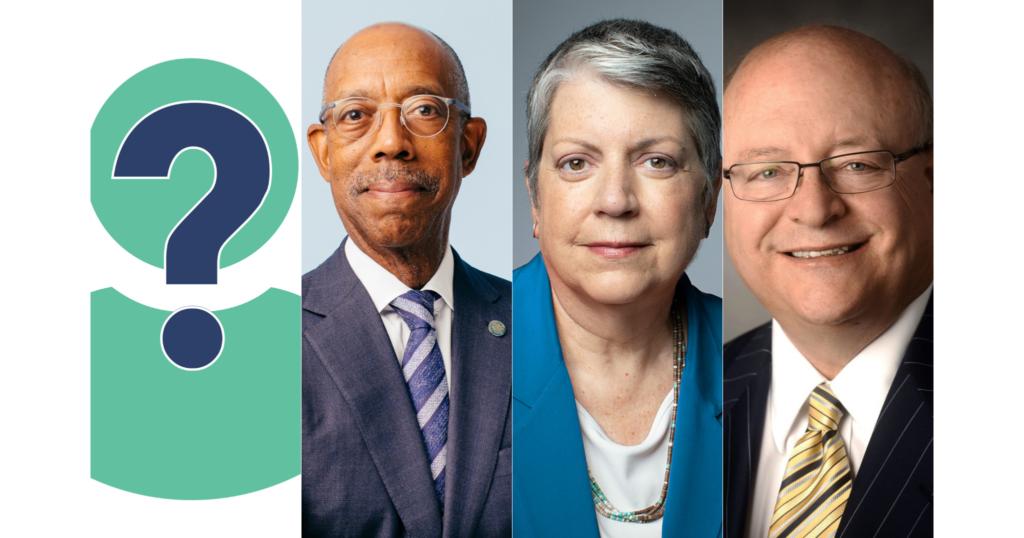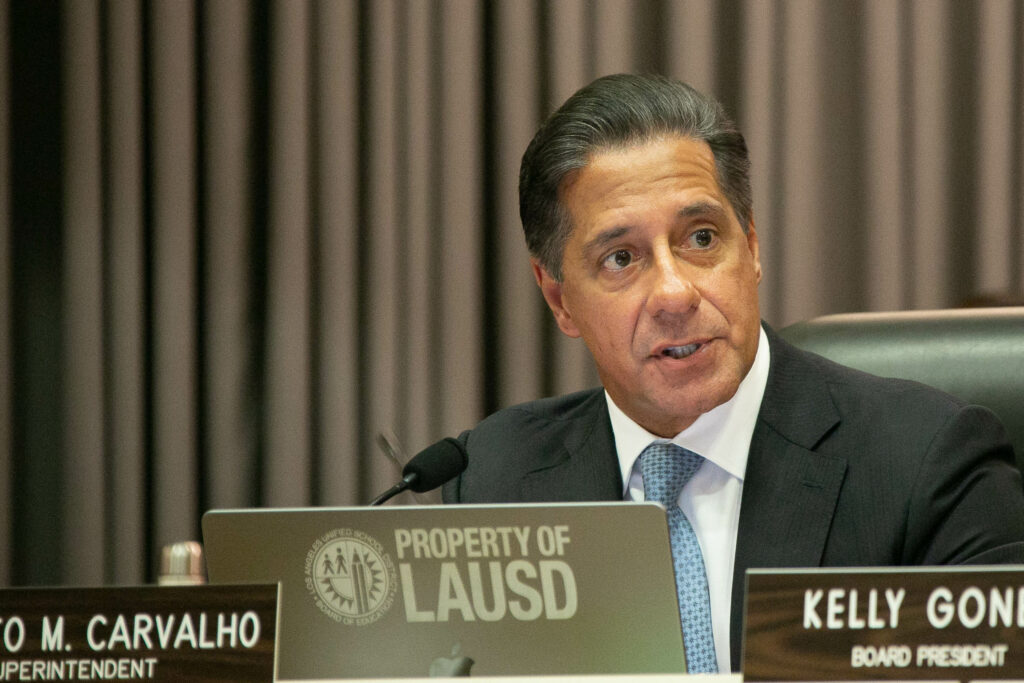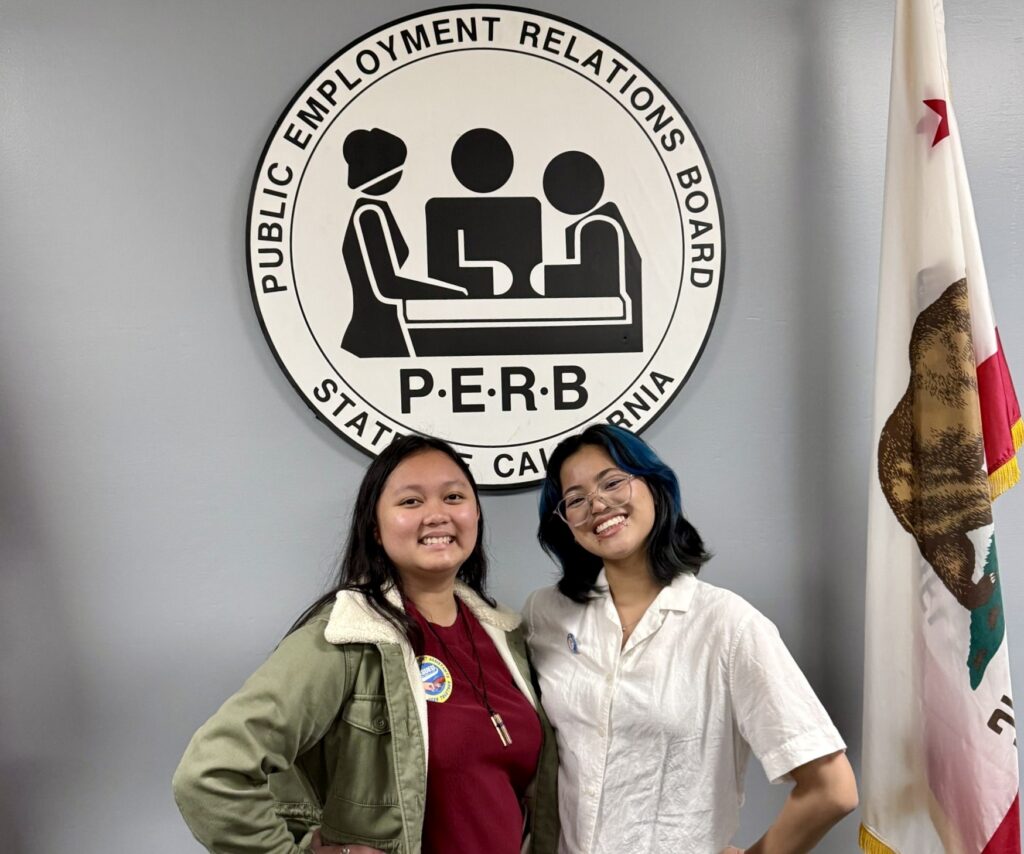
The presidency of the University of California has long been considered one of the more challenging positions in American higher education. It requires overseeing nearly 300,000 students, 10 campuses, $8 billion a year of premier research, six medical centers and three federally funded national energy laboratories.
Now, UC’s board of regents is looking for the next person to fill the role and replace President Michael V. Drake, who plans to step down at the end of the academic year. But in the months since the search began, the job has only grown more complicated and pressured as a result of Donald Trump’s election and his policies affecting funding, racial diversity, student protests and many other aspects of higher education.
“I think the university is dealing with more significant challenges all at the same time than they probably have in the last 50 years, 60 years,” said John Pérez, the former state Assembly speaker who served on the university’s board of regents for a decade, including a stint as chair, before stepping down last year. “My friends on the regents have a difficult task to find the person to lead through this moment.”
The U.S. Department of Justice is currently investigating, among other things, allegations of discriminatory admissions practices and complaints of antisemitism at several UC campuses.
The federal threats are on top of issues that existed even before Trump took office, such as the likelihood of a nearly $400 million cut or 8% to UC’s state funding this year. Even with that probable budget reduction, the next president will be expected to increase graduation rates — especially among Black and Latino students — and to keep enrolling more California residents.
And there are the perennial questions of how to deal with the many and sometimes conflicting constituencies within the state and university, including the state’s governor and legislators, faculty, alumni, student leaders, labor unions, political activists and parents.
“We need a UC president that can be ready to advocate and fight back on any reduction of potential federal funds, and then also be ready to figure out what to do in case we do incur those losses,” said Assemblymember Mike Fong, D-Alhambra, who is chair of the Assembly’s Higher Education Committee. He said some legislators have floated the idea of another tuition hike for out-of-state students.
University presidential searches often raise the questions of whether to get someone from inside the university or someone with fresh, outside experience, and whether to hire someone with experience in academia or from another background, such as in business, government or philanthropy. UC has tried different routes in its most recent presidential hirings.
It’s unlikely that the next president will have every desirable skill and experience, said Hironao Okahana, a vice president at the American Council on Education, a national organization that lobbies on behalf of universities.
What’s most important, he said, is that the president be prepared for a constantly evolving job. He noted that in the past five years, college leaders have had to navigate a pandemic, a racial reckoning following the murder of George Floyd and now the many federal threats. “Higher education leadership is never static, especially for a place like the University of California,” he said.
The search for the next president was launched last summer after Drake announced he would step down. Drake, who earns a base salary of $1.3 million after getting a raise last year, entered the job in 2020 and had to deal with many of the issues arising from the pandemic, including a temporary switch to online classes.
The university’s website for the search says the regents are seeking “an individual who is an outstanding leader and a respected scholar who has successfully demonstrated these abilities in a major complex organization.”
At the most recent regents meeting last month, board chair Janet Reilly said the special regents committee in charge of finding the next president “has been working diligently” but did not say when the search would finish. The committee’s work is being tightly held: It has met only in closed session and has not released the names of any potential finalists.
UC also hosted three town hall meetings in January to gather public feedback. Assisting with the process is SP&A Executive Search, a national search firm specializing in higher education and nonprofit sectors.
Drake’s final months on the job have been marked by policies and actions responding to the Trump administration, a reality with no end in sight.
Last month, his office announced UC would no longer require faculty job applicants to submit statements about how they would promote diversity. That move came after the Trump administration threatened to withhold funding from universities with programs related to diversity, equity and inclusion. Earlier that same day, Drake announced a systemwide hiring freeze in anticipation of those potential funding cuts.
In February, UC also filed a declaration of support when California and 21 other states sued the Trump administration over billions in proposed National Institutes of Health (NIH) funding cuts. The judge in the case has temporarily blocked the Trump administration from making those reductions.
UC gets about $6 billion annually in federal funds for research and other program supports, with NIH being the top source. Cuts to that funding would be felt across the immense system, which comprises nine undergraduate campuses and one graduate-only campus, UC San Francisco. All 10 campuses have R1 status from the Carnegie Classification of Institutions of Higher Education, the highest tier for research universities.
Also potentially at risk if the White House and Congress decide to pursue deeper, broader cuts is the $8 billion in Medicare and Medicaid that UC receives for patient care at the medical centers at its Davis, Irvine, Los Angeles, Riverside, San Diego and San Francisco campuses. So far, Trump says he will not reduce those.
UC’s next president could be squeezed from two sides: trying to preserve federal funds while also facing pressure from students and faculty not to succumb to any potential demands from Trump. Last month, Columbia University agreed to change its protest policies, security practices and Middle Eastern studies department to keep $400 million that the Trump administration threatened to cut.
Students are “extremely concerned” that a similar scenario could play out at UC, said Aditi Hariharan, a fourth-year student at UC Davis and president of the systemwide UC Student Association. The U.S. Department of Education is investigating UC’s Berkeley, Davis, San Diego and Santa Barbara campuses for possible Title VI violations “relating to antisemitic harassment and discrimination.” Separately, the Department of Justice is investigating Berkeley, UCLA and UC Irvine for potentially considering race in admissions, which UC has denied doing.
Hariharan said she was disappointed to see UC stop requiring diversity statements, which she viewed as a concession to Trump.
“I’m hoping to see the next UC president push back stronger,” she said.
To navigate the many federal complications, UC might consider hiring someone with government experience this time, said Adrianna Kezar, director of the University of Southern California’s Pullias Center of Higher Education.
She pointed to Janet Napolitano, who was UC’s president from 2013 to 2020 and took the job after stints as the U.S. secretary of homeland security and governor of Arizona.
“Someone like that will understand how to navigate all the executive orders, how to navigate shifts in the agencies,” Kezar said. “Over the next four years, this is going to be a landscape where, if you lack that kind of experience, I think it’s going to be really challenging.”
It would also help if the next president has philanthropic acumen, Kezar added. If UC loses significant federal dollars, the university will need to look for new funding sources, she said.
Napolitano was succeeded by Drake, who had a much more traditional academic background. He served as president of Ohio State University and, before that, was UC’s vice president for health affairs and later chancellor of UC Irvine. Napolitano’s predecessor, Mark Yudof, also had an academic background. Before serving as UC’s president from 2008 to 2013, he was the dean of the University of Texas at Austin’s law school, president of the University of Minnesota and chancellor of the University of Texas system.
Pérez, the former regent who chaired the board when Drake was hired, said he’d prefer UC to hire another president who has headed a large public research university, especially if they have experience overseeing academic medical centers.
Despite the many threats and challenges UC faces, Pérez added that he’s confident “in the strength of the institution to weather these storms.”
“But having the right leader means that we will weather the storms more easily and that folks will have confidence that we won’t lose sight of all that’s essential in the university,” he said.





